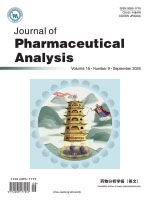2018 Vol. 8, No. 1
Display Method:
2018, 8(1): 1-9.
Abstract:
2018, 8(1): 10-19.
Abstract:
2018, 8(1): 20-26.
Abstract:
2018, 8(1): 27-36.
Abstract:
2018, 8(1): 37-44.
Abstract:
2018, 8(1): 55-59.
Abstract:
2018, 8(1): 60-68.
Abstract:
2018, 8(1): 69-74.
Abstract:



